Top 7 Popular Mushrooms to Grow
- April 5, 2024
- 0 comment
Growing mushrooms at home has become a popular hobby for food enthusiasts and gardeners alike. Mushrooms are not only delicious but also offer numerous health benefits.

Growing mushrooms at home offers a unique and rewarding gardening experience, blending culinary adventure with simple horticultural techniques. These fungi, with their diverse flavors and textures, provide an exciting alternative to traditional home gardening.
In this guide, we’ll explore a range of mushrooms that are perfect for indoor and backyard cultivation, suited to various tastes and skill levels.”
List of Top 7 Popular Mushrooms to Grow
- Oyster Mushrooms (Pleurotus ostreatus)
- Shiitake Mushrooms (Lentinula edodes)
- Button Mushrooms (Agaricus bisporus)
- Cremini Mushrooms (Agaricus bisporus)
- Portobello Mushrooms (Agaricus bisporus)
- Enoki Mushrooms (Flammulina velutipes)
- Maitake Mushrooms (Grifola frondosa)
1. Oyster Mushrooms (Pleurotus ostreatus)
Oyster mushrooms, recognized for their distinct fan shape and delicate flavor, are a popular choice for home growers due to their rapid growth and adaptability to various substrates.
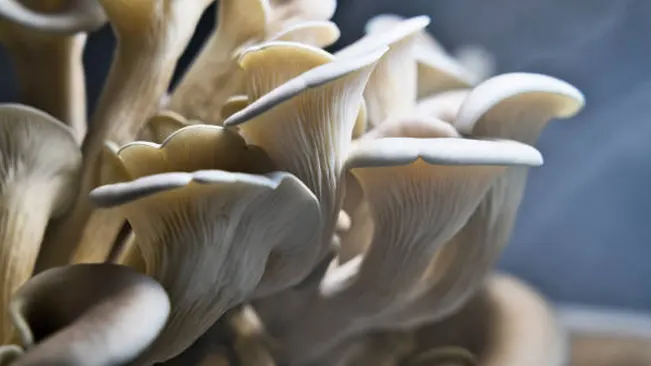
Characteristics of Oyster Mushrooms
- Appearance: Oyster mushrooms are named for their resemblance to the bivalve in shape. They typically have broad, fan or oyster-shaped caps and can come in a variety of colors including white, grey, pink, and yellow.
- Size and Growth: These mushrooms are known for their fast growth and can reach a considerable size, making them visually impressive.
- Taste and Texture: They have a mild, slightly sweet flavor and a velvety texture, which makes them versatile in various culinary applications.
Why Grow Oyster Mushrooms at Home
- Ease of Cultivation: Oyster mushrooms are ideal for beginners due to their robust nature. They are less susceptible to contamination compared to other mushroom varieties, which makes them a forgiving choice for those new to mushroom cultivation.
- Rapid Growth Cycle: One of the most appealing aspects of growing Oyster mushrooms is their quick growth cycle. You can expect to see growth within just a few days of inoculation, and they typically are ready to harvest within a few weeks.
- Growing Medium Flexibility: They can be grown on a variety of substrates. This includes straw, coffee grounds, and even cardboard, offering flexibility and making use of readily available and often recycled materials.
- High Yield: Oyster mushrooms tend to produce a substantial yield from a small amount of spawn. This makes them cost-effective and rewarding for home growers.
- Health Benefits: Besides their delicious taste, Oyster mushrooms are low in calories and high in proteins, vitamins, minerals, and antioxidants. They can contribute to a balanced diet and offer various health benefits.
Cultivation Tips
- Substrate Preparation: Before inoculation, ensure your chosen substrate is properly sterilized to reduce the risk of contamination.
- Humidity and Ventilation: These mushrooms require a humid environment and good air circulation to thrive. Regular misting and a well-ventilated growing area are key.
- Harvesting: Harvest them when the edges of the caps are still slightly curled downward. Over-mature mushrooms may lose their texture and flavor.
2. Shiitake Mushrooms (Lentinula edodes)
Shiitake mushrooms, known for their rich, savory flavor, are a top pick for home cultivation, especially on hardwood logs or sawdust blocks.
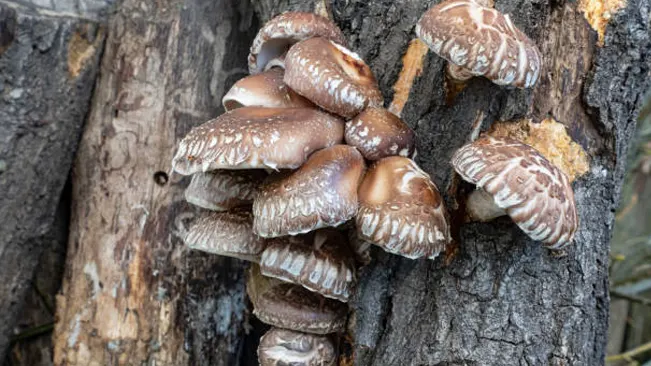
Characteristics of Shiitake Mushrooms
- Unique Flavor Profile: Shiitake mushrooms are renowned for their rich, savory flavor, often described as umami. This distinct taste is a result of their natural compounds, including guanylic and lentinic acids.
- Texture: They have a meaty texture, which holds up well in cooking, making them a favored ingredient in various dishes.
- Appearance: Shiitake caps range from light brown to dark brown, with a slightly curved shape. The mushrooms grow to a medium size and have an open cap with visible gills.
Why Grow Shiitake Mushrooms at Home
- Medicinal Properties: Shiitake mushrooms are known for their health benefits. They are rich in compounds that boost the immune system, lower cholesterol, and have potential anti-cancer properties.
- Cultivation on Wood: Shiitake mushrooms naturally grow on decaying hardwood. At home, they can be cultivated on logs or hardwood sawdust blocks. This method of cultivation mimics their natural environment and contributes to their distinctive flavor.
- Longer Growing Season: Although they take longer to produce fruit compared to some other varieties, like Oyster mushrooms, the longer growing season can be more rewarding for patient gardeners.
- Sustainable and Eco-Friendly: Growing Shiitake mushrooms on logs is a sustainable practice, as it often involves using logs from tree thinning, turning waste wood into a valuable food source.
Cultivation Tips
- Log Selection: Use hardwood logs like oak, beech, or maple for the best results. The logs should be fresh, ideally cut within a few weeks of inoculation.
- Inoculation: Inoculate the logs with Shiitake spawn, either in the form of plugs or sawdust spawn. The inoculation process involves drilling holes into the logs and inserting the spawn.
- Shade and Moisture: Shiitake logs need to be kept in a shaded area to maintain moisture. They also require regular soaking or misting to promote mushroom growth.
- Patience is Key: It can take several months to a year for the mycelium to fully colonize the logs and start fruiting.
3. Button Mushrooms (Agaricus bisporus)
Button mushrooms, the most commonly consumed variety worldwide, are a great starting point for those new to home mushroom cultivation.
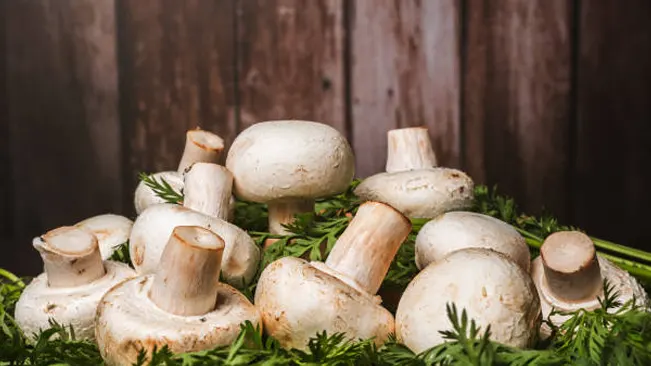
Characteristics of Button Mushrooms
- Appearance: Button mushrooms are small to medium in size with a rounded cap and a short stem. They start off with a tight cap which gradually opens as they mature. Initially, they are white but can turn to a light brown as they age.
- Maturity Stages: Interestingly, Button mushrooms are the same species as Cremini and Portobello mushrooms. They’re just at different stages of maturity, with Button being the youngest and Portobello the oldest.
- Flavor and Texture: They have a mild, earthy flavor that intensifies when cooked. Their spongy texture makes them great for absorbing flavors, making them a popular choice for a variety of dishes.
Why Grow Button Mushrooms at Home
- Culinary Flexibility: Due to their mild flavor and firm texture, they are extremely versatile in cooking. They can be used in everything from salads to stir-fries to sauces.
- Ease of Cultivation: Button mushrooms are relatively straightforward to grow at home. They require a substrate like composted manure, which provides the nutrients they need.
- Continuous Harvest: With proper care, Button mushrooms can offer a continual harvest over several weeks. This makes them a rewarding choice for home growers who want a steady supply of fresh mushrooms.
Cultivation Tips
- Compost Preparation: The compost used for Button mushrooms must be well-prepared, often involving a mix of straw and manure that has been composted until it reaches a rich, dark state.
- Sterilization and Pasteurization: To reduce the risk of contamination, the compost should be pasteurized or sterilized before inoculation with mushroom spawn.
- Temperature and Light Conditions: Button mushrooms prefer cooler temperatures, usually around 55-60°F (13-16°C). While they don’t need much light, some indirect light can be beneficial.
- Moisture and Ventilation: They need a moist environment, but it’s important to avoid overwatering. Good ventilation is also crucial to prevent the buildup of carbon dioxide and to promote healthy growth.
4. Cremini Mushrooms (Agaricus bisporus)
Cremini mushrooms, essentially young Portobello mushrooms, offer a deeper flavor and are easily cultivated at home alongside button mushrooms.
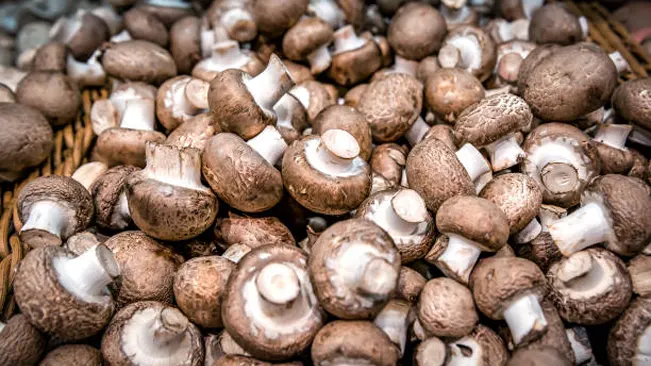
Characteristics of Cremini Mushrooms
- Intermediate Stage: Cremini mushrooms are essentially the same species as Button and Portobello mushrooms. They are at the intermediate stage of growth, older than button mushrooms but younger than Portobellos.
- Appearance: Cremini mushrooms have a firmer, browner cap compared to the white button mushroom. The caps are more opened up than button mushrooms, revealing more of their dark gills.
- Flavor Profile: These mushrooms offer a slightly richer and earthier flavor compared to their younger counterpart, the white button mushroom. This depth of flavor makes them highly valued in various culinary dishes.
Why Grow Cremini Mushrooms at Home
- Culinary Advantage: Their robust flavor profile makes Cremini mushrooms a preferred choice for many recipes, adding a depth of flavor that surpasses that of white button mushrooms.
- Easy Transition for Growers: For home growers who have already tried cultivating white button mushrooms, growing Cremini is a natural next step. The process is very similar, but with slightly different growth timings.
- Health Benefits: Like other members of the Agaricus bisporus family, Cremini mushrooms are nutritious, being a good source of protein, B vitamins, and minerals. They also contain antioxidants and can contribute to a healthy diet.
Cultivation Tips
- Similar Growing Conditions to Button Mushrooms: The cultivation process for Cremini mushrooms is similar to that of button mushrooms. They require a composted substrate, typically a mix of straw and manure, that is pasteurized or sterilized.
- Harvesting Stage: The key difference in growing Cremini mushrooms lies in the harvesting stage. They are harvested when slightly more mature than button mushrooms but before they mature into Portobellos. This stage is when the caps are fuller and browner but not yet fully expanded.
- Moisture and Temperature Control: Maintaining the right level of moisture and a stable temperature is critical. Cremini mushrooms thrive in cool temperatures around 55-60°F (13-16°C).
5. Portobello Mushrooms (Agaricus bisporus)
Portobello mushrooms, known for their large, meaty caps, are a favorite for home gardeners looking to add a gourmet touch to their edible garden.

Characteristics of Portobello Mushrooms
- Mature Stage: Portobello mushrooms are the mature form of the Agaricus bisporus species, which also includes the younger white button and Cremini mushrooms.
- Appearance: They are distinguished by their large size, with caps that can measure up to six inches in diameter. The cap is broad and open, exposing dark gills underneath.
- Texture and Flavor: Portobellos are celebrated for their dense, meaty texture, making them a popular meat substitute in various dishes. Their flavor is deeper and more intense than their younger counterparts, with a rich, earthy, and slightly nutty taste.
Why Grow Portobello Mushrooms at Home
- Culinary Appeal: Their substantial size and meaty texture make Portobello mushrooms a favorite for grilling, roasting, and stuffing. They’re especially loved by vegetarians and vegans for their hearty texture.
- Growing Satisfaction: Growing Portobellos to full maturity offers a sense of accomplishment, as it requires patience and attentive cultivation over a longer period.
- Nutritional Value: Like other stages of Agaricus bisporus, Portobellos are nutritionally rich. They are low in calories yet high in fiber, vitamins, and minerals. They also contain antioxidants and other beneficial compounds.
Cultivation Tips
- Extended Growth Period: To grow Portobellos, the same basic conditions required for button and Cremini mushrooms apply. However, these mushrooms are allowed to grow to full maturity. This means a longer period before harvesting, during which the cap fully opens and enlarges.
- Substrate and Environment: Portobellos are typically grown on a composted substrate of straw and manure. The environment should be kept cool (around 55-60°F or 13-16°C) and humid.
- Harvest Timing: It’s crucial to harvest Portobellos at the right time. If left too long, they can overripen and lose flavor and texture. The ideal time is when the caps are fully expanded but before they start to turn upwards.
6. Enoki Mushrooms (Flammulina velutipes)
Enoki mushrooms, with their long, slender stems and delicate caps, are favored by home growers for their unique appearance and crisp texture.
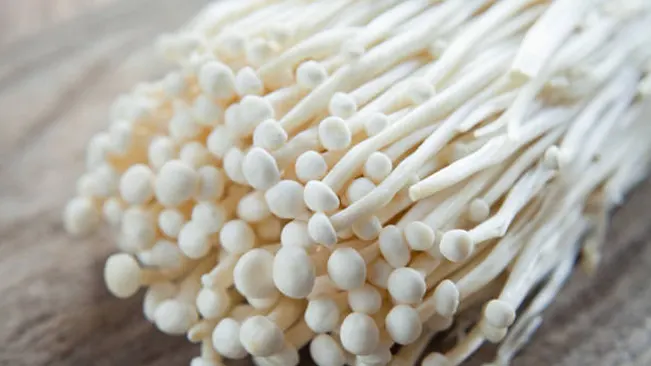
Characteristics of Enoki Mushrooms
- Distinct Appearance: Enoki mushrooms are easily recognizable by their long, slender stems and small, button-like caps. They often grow in clusters, giving them a delicate, stringy appearance.
- Color and Size: They are typically white or pale cream in color. The stems can grow quite long, especially when cultivated in a controlled environment where they are kept away from light to encourage elongation.
- Texture and Flavor: Enoki mushrooms are known for their crisp, crunchy texture and mild, somewhat fruity flavor. They retain their crunch even when lightly cooked, adding an interesting texture to dishes.
Why Grow Enoki Mushrooms at Home
- Unique Culinary Experience: Enoki mushrooms are a staple in many Asian cuisines and are used in soups, stir-fries, and salads. Growing them at home allows for fresh, crunchy additions to various dishes.
- Cooler Growing Conditions: Unlike many other mushroom varieties, Enokis prefer cooler temperatures, usually around 45°F to 50°F (7°C to 10°C). This makes them an excellent choice for growers in cooler climates or for indoor cultivation in cooler spaces.
- Interesting Growth Process: The way Enoki mushrooms grow, with elongated stems in the absence of light, makes for a fascinating cultivation process, different from most other mushroom types.
Cultivation Tips
- Substrate and Preparation: Enoki mushrooms typically grow on a substrate composed of sawdust, enriched with nutrients. The substrate needs to be sterilized to prevent contamination.
- Reduced Light Exposure: To achieve the characteristic long stems, Enoki mushrooms should be grown in a dark or very dimly lit environment. This mimics their natural growing conditions under leaves or in the dark forest floor.
- Humidity and Ventilation: High humidity is crucial for their development, but it’s equally important to ensure good air circulation to prevent mold growth.
- Harvesting: Enoki mushrooms are ready to harvest when the caps are fully formed but before they start to spread open. They are typically cut at the base of the cluster.
7. Maitake Mushrooms (Grifola frondosa)
Maitake mushrooms, also known as Hen of the Woods, are chosen by home growers for their health benefits and distinct, earthy flavor.
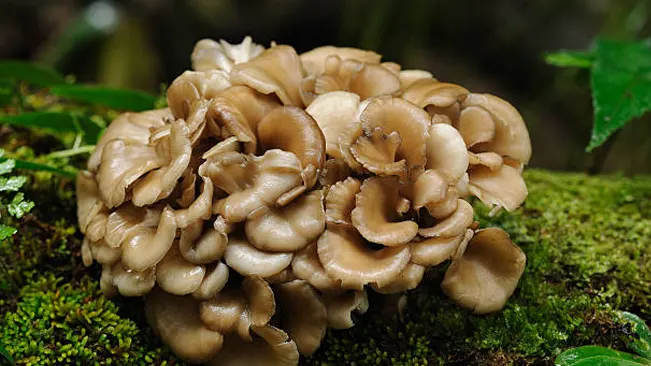
Characteristics of Maitake Mushrooms
- Distinctive Appearance: Maitake mushrooms, commonly known as Hen of the Woods, have a unique, frilly appearance. They grow in large clusters with multiple grayish-brown caps that are fan-like or rosette-shaped.
- Rich Flavor: Maitake mushrooms are prized for their deep, woodsy flavor and a rich, somewhat spicy taste. This robust flavor profile makes them a favorite in culinary circles, especially in dishes that can benefit from their hearty texture.
- Texture: They have a firm, chewy texture that holds up well in cooking, making them versatile for a range of culinary uses, from sautéing to roasting.
Why Grow Maitake Mushrooms at Home
- Health Benefits: Maitake mushrooms are known for their potential health-promoting properties. They are believed to support immune function and may have benefits for blood sugar regulation and cholesterol levels.
- Growing on Hardwood: Maitakes naturally grow at the base of hardwood trees like oaks. For home cultivation, they can be grown on hardwood logs or sawdust substrates, making them a feasible project for those with access to these materials.
- Abundant Harvest: When conditions are right, Maitake mushrooms can produce a generous yield. This can be particularly satisfying for home growers looking for a substantial return on their cultivation efforts.
Cultivation Tips
- Substrate and Conditions: The optimal substrate for Maitake is hardwood, such as oak. The wood needs to be inoculated with Maitake spawn, and this can be done using plugs or sawdust spawn.
- Moisture and Shade: These mushrooms thrive in a moist and shaded environment. It’s important to maintain consistent moisture levels without over-saturating the wood.
- Patience Required: Maitake mushrooms take time to develop. It may take a year or more for the mycelium to fully colonize the wood and produce fruiting bodies. Patience and consistent monitoring of the substrate’s condition are key.
- Harvesting: Maitakes are harvested when the fruiting bodies are fully developed but before they become too large and tough. The entire cluster is typically harvested at once by cutting it at the base.
Related Post:
Conclusion
Growing mushrooms at home, from versatile Oyster and Button mushrooms to the distinctive Shiitake, Maitake, and Portobello, offers a rewarding blend of culinary and gardening experiences. Each variety requires specific conditions and care, catering to a range of preferences and skill levels. This venture into mycology not only enhances your cooking with fresh, home-grown flavors but also introduces the fascinating world of fungi cultivation right in your own space.
Frequently Asked Questions (FAQ)
- What are the easiest mushrooms to grow for beginners?
- Oyster mushrooms are the easiest due to their adaptability and resistance to contamination. They grow quickly on a variety of substrates like straw or coffee grounds.
- Do mushrooms need sunlight to grow?
- No, mushrooms don’t require sunlight to grow as they don’t photosynthesize. However, indirect light can help in the development of fruiting bodies for certain varieties.
- What is the best substrate for growing mushrooms?
- The ideal substrate depends on the mushroom variety. Oyster mushrooms grow well on straw or coffee grounds, Shiitake prefers hardwood or sawdust, and Button mushrooms do well on composted manure.
- How long does it take to grow mushrooms at home?
- It typically takes a few weeks to a few months, depending on the mushroom type. Oyster mushrooms can fruit in as little as 3-4 weeks, while Shiitake may take several months.
- Do I need to sterilize the substrate, and if so, how?
- Yes, sterilization is important to prevent contamination. You can sterilize substrates like straw or sawdust by boiling, steaming, or baking them at high temperatures.
- How do I maintain the right humidity for growing mushrooms?
- Maintain humidity by misting the substrate regularly and using a humidity tent or tray. Mushrooms typically require a humidity level around 80-95%.
- What temperature is ideal for mushroom cultivation?
- Most mushrooms grow best in temperatures between 55°F to 70°F (13°C to 21°C). Some varieties like Enoki prefer cooler temperatures.
- Can I grow mushrooms from store-bought mushrooms?
- Yes, you can potentially grow mushrooms from store-bought ones by placing stem butts on a suitable substrate. However, using spores or spawn purchased from a reliable supplier increases success rates.
- How do I know when mushrooms are ready to harvest?
- Harvest mushrooms when their caps are fully developed but before they start to release spores. This is typically when the cap edges begin to flatten or slightly curl.
- What are the common problems in mushroom cultivation?
- Common issues include contamination by mold or bacteria, incorrect humidity or temperature, and insufficient ventilation. Ensuring a clean environment and closely monitoring growing conditions can mitigate these problems.

Charles Hayes
Forestry AuthorI'm Charles Hayes, I bring over 15 years of specialized expertise in landscaping and woodworking, blending artistic design with sustainable environmental stewardship. My career, fueled by a profound passion for the natural world, encompasses extensive education and hands-on experience in creating harmonious, eco-friendly outdoor spaces and responsibly managing forest resources. Recognized for my professional standing, I am committed to continuous learning and certification in cutting-edge practices. My expertise is not only reflected in my work but also in my contributions to community projects, educational workshops, and collaborations with industry leaders. As an authoritative voice in my field, I strive to share knowledge and promote environmentally conscious approaches, making me a trusted resource in landscaping and forestry.

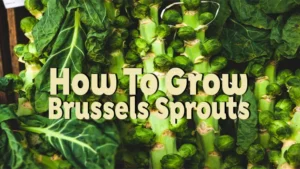
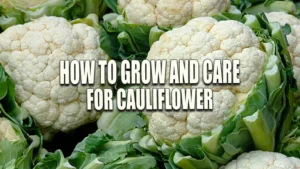










Leave your comment